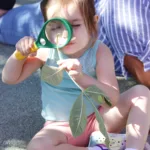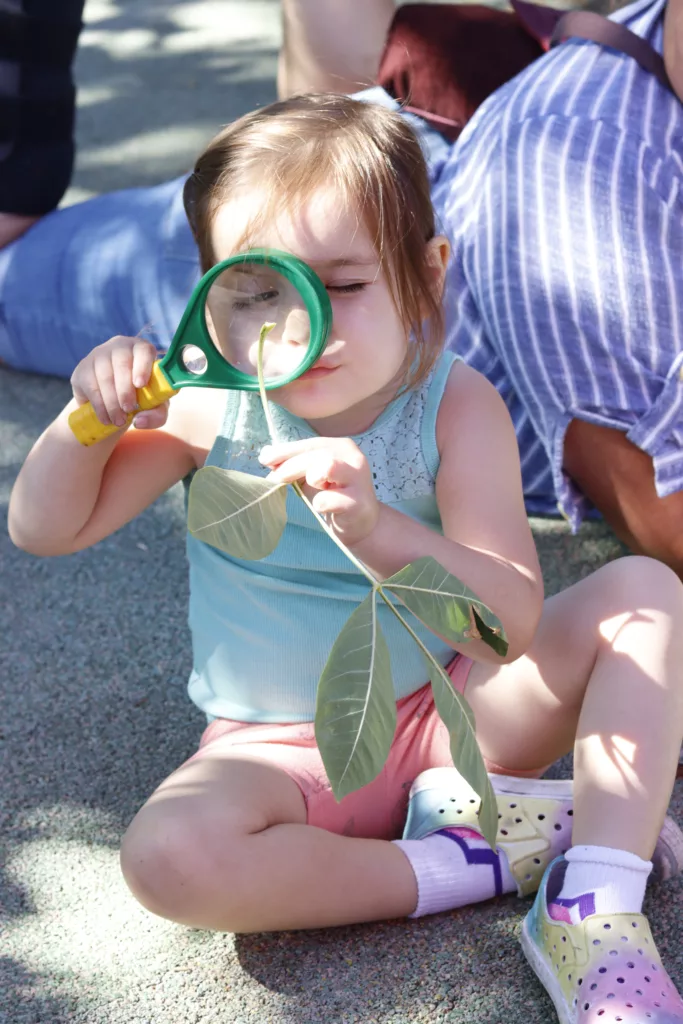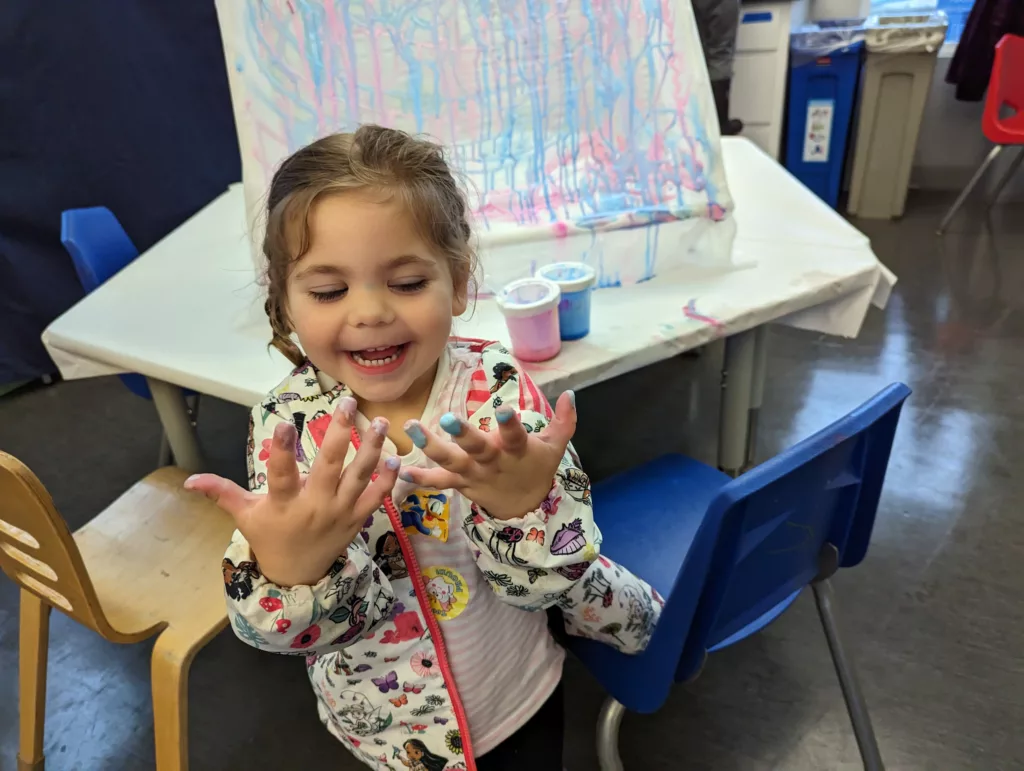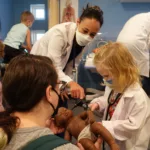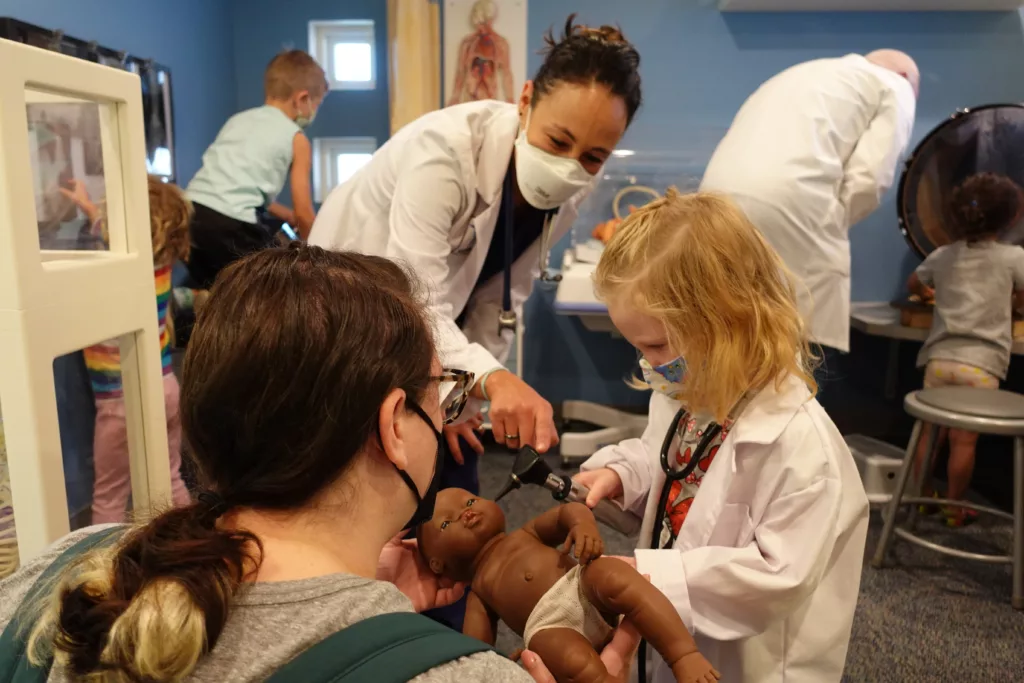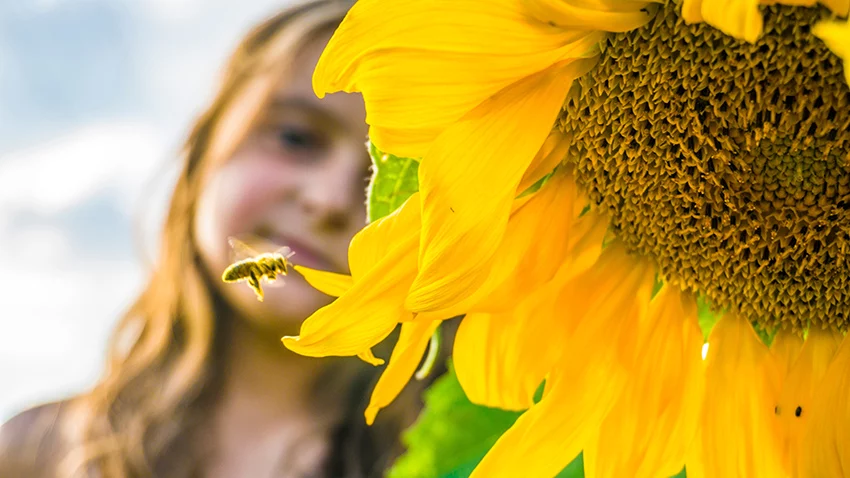
Did you know California is home to over 1,600 species of native bees? That’s right! And we are so lucky to share our home with them! Many of our favorite fruits grown here in California including strawberries, peaches, and blueberries, rely on these bee species to grow.
This is because bees are some of the busiest pollinators in the world!
What is a Pollinator?
A pollinator is any animal or insect that helps plants grow new fruit and seeds. They do this by spreading pollen. Only plants that have been pollinated can produce new fruit or seeds. So without this pollination, these plants would no longer exist.
When animals like bumblebees, hummingbirds, and butterflies eat the nectar from certain plants and flowers, their bodies get covered in pollen. As they go around looking for more delicious nectar, the pollen that is stuck to them rubs off on the next flower or plant they eat from, effectively pollinating it.

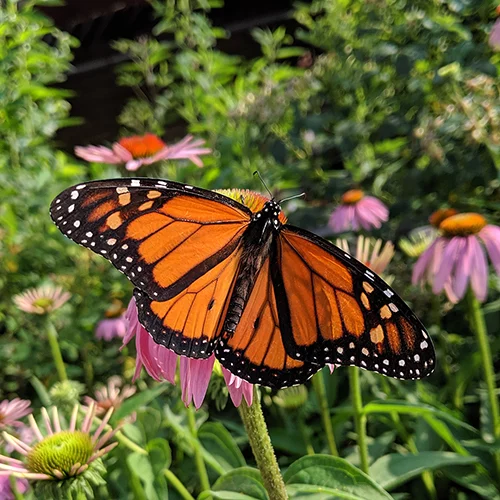
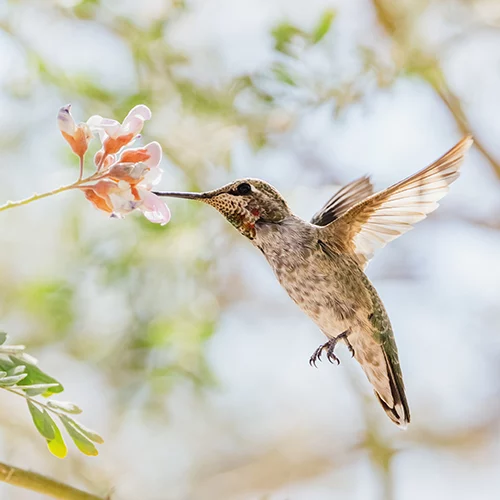
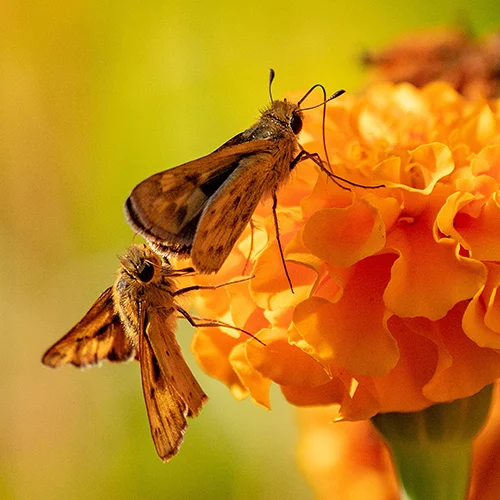
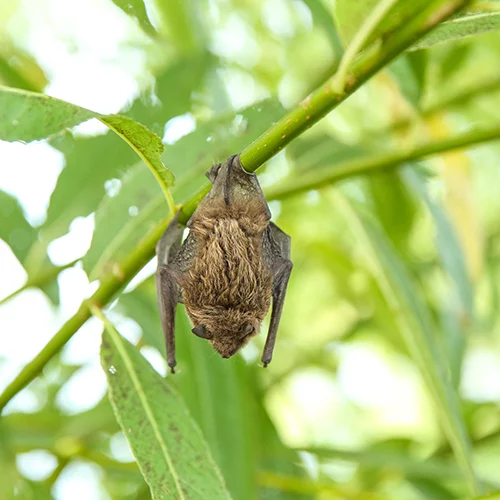
Some Common Pollinators in Sonoma County
- Bees
- Butterflies
- Hummingbirds
- Moths
- Bats
Why Are Pollinators Important?
It is estimated that pollinators are responsible for pollinating anywhere from 75%– 90% of all the flowering plants on Earth, as well as at least 1/3 of the crops we grow for food. In fact, without animal and insect pollinators, many of the foods, edible oils, fibers, and medicines that we use every day would not exist.
Pollinators also play a huge role in supporting countless natural ecosystems that sustain our quality of life, including keeping our air clean and our soils healthy and full of nutrients.
How Can We Protect the Pollinators in Sonoma County?
There are many ways you can help increase the number of pollinators in our area, and protect the local ecosystems that provide essential habitats for native bees, birds, butterflies, moths, and other pollinators.
Below we outline four steps you can take right now to help our local pollinator populations thrive!
1. Respect Your Pollinator Pals
It’s important to remember to respect all wildlife, and always remain a safe distance away from them. Bumblebees, hummingbirds, and all the other pollinators are small and delicate, so it’s easy for people to accidentally hurt them, or scare them away from their homes or food sources.
If you see one of our pollinator pals outside, remember to look, but don’t touch, and remain calm and quiet when they are nearby. Pollinators are hard workers, so if you leave them alone and let them do their job, they won’t bother you either.
2. Create a Pollinator Garden with Native Plants
Many pollinators rely on flower nectar and pollen for food. Nectar is a sweet mix of water and sugars that gives them energy, while pollen is a great protein source that keeps them strong.
Pollinators are attracted to plants and flowers that are brightly colored and have a strong scent. Different kinds of colors, fragrances, heights, and blooming times will attract different types of pollinators. By incorporating a diverse selection of native plants in your garden you can support a variety of pollinator species throughout the year.
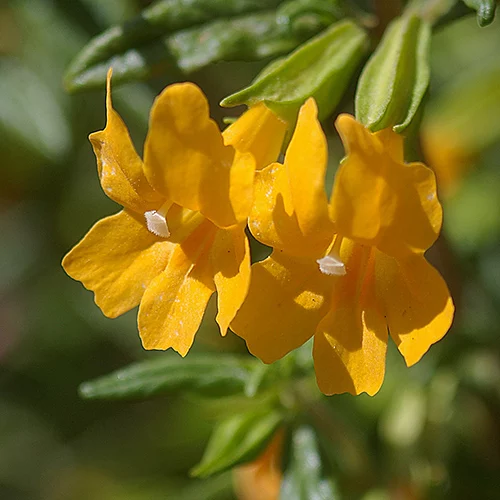
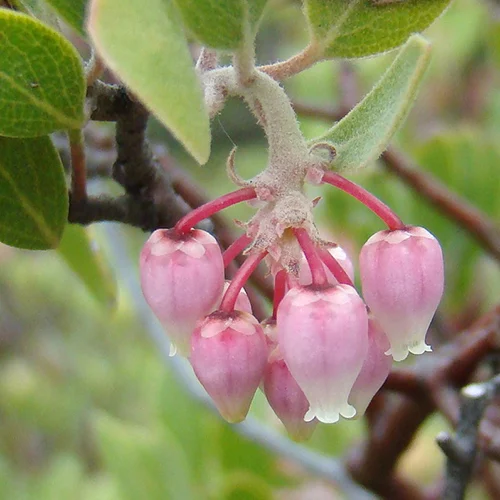
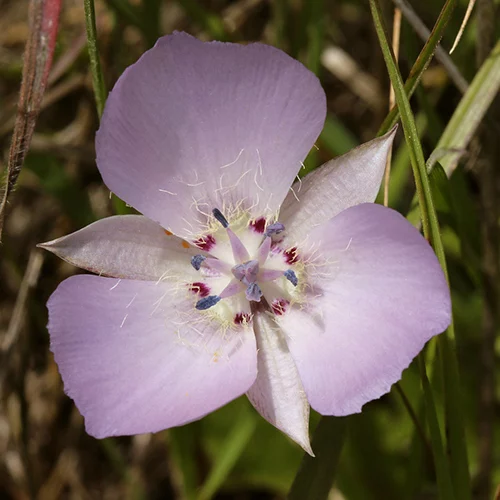
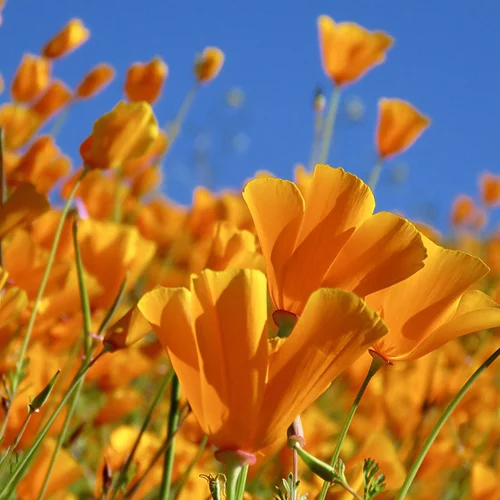
Some Native Plants to Sonoma County that Pollinators Love:
- Monkey Flower
- Manzanita
- Mariposa Lily
- California Poppies
Grouping your plants together can increase pollination efficiency as it helps ensure the correct pollen is transferred to the same species. If you are starting a pollinator garden, it is also important to plant with the blooming season in mind and choose a variety of flowers and plants to make sure something is blooming in your garden at all times.
3. Maintain Pollinator Friendly Habitats
While a garden full of native plants is a great food source, there are many other ways you can create and maintain pollinator-friendly spaces around your home. Shelter from predators, and severe weather, as well as clean and reliable water, are also important resources many native pollinators need.
Shelter: Grouping plants close together and having a variety of different canopy layers can protect pollinators from predators. This allows them to move around an area without being seen and gives them a place to rest safely when they need to.
Water: Bird baths, ponds, and other shallow bodies of running water are great for thirsty pollinators. It’s important to keep these water sources as clean as possible, and avoid any kind of stagnant water, as they can harbor pests.
4. Be Mindful With Pesticides
Using pesticides in your garden or anywhere around your home can affect more than just unwanted pests and weeds. Many pesticides, insecticides, herbicides, and fungicides can kill other beneficial insects including pollinators.
Natural Ways to Manage Pests and Weeds at Home:
- Citrus Peels: Rubbing citrus peels on your doorways and windowsills can help keep spiders, mosquitos, and ants away.
- Planting Herbs: Mint, lemongrass, basil, and other strong-smelling herbs repel unwanted pests and make a great addition to any garden. Spiders hate peppermint, and flies and mosquitoes hate eucalyptus.
- Essential Oils: If you don’t have the space to plant herbs, you can use essential oils mixed with water to create a solution to spray around your home.
- Cinnamon: Sprinkling cinnamon in a problem area is a great natural pest control solution. Many unwanted bugs, like ants, won’t cross a line of cinnamon.
- Organic Mulch: Adding a layer of organic mulch, like bark, pine needles, or straw around your garden is a great natural form of weed control.
- White Vinegar: For white vinegar to be an effective weed killer, you’ll have to apply it frequently and incredibly carefully, as it can also kill any nearby plants.
Keeping your soil healthy and rich with nutrients can also help deter garden pests. Make sure to keep your garden’s immune systems strong by pruning away dead foliage, and keeping the soil well aerated. This will help reduce the need for any kind of chemical intervention and help ensure the beauty and longevity of your pollinator-friendly, organic garden.
Discover All the Ways to Learn About Nature and Our Environment at the Children’s Museum of Sonoma County
The Children’s Museum is a space dedicated to curiosity, exploration, discovery, and amazement! In addition to all our indoor attractions, our museum also features an elaborate outdoor play space known affectionately as Mary’s Garden.
This area is designed to introduce children to concepts like agriculture, recycling, native wildlife habitat preservation, and much more! Through fun and engaging exhibits, activities, and guided programs, we aim to provide valuable learning experiences that inspire a deeper connection to nature and a lifelong love and respect for our environment.
We invite you and your little learners to visit the Children’s Museum of Sonoma County for a day of play and learning! Head to our event calendar to see all the weekly programs and special events happening at the museum this month!
Don’t forget to sign up for our newsletter to be the first to know about upcoming events, programs, and happenings at the museum!
Sign up for E-News
Sign up for E-News Form
